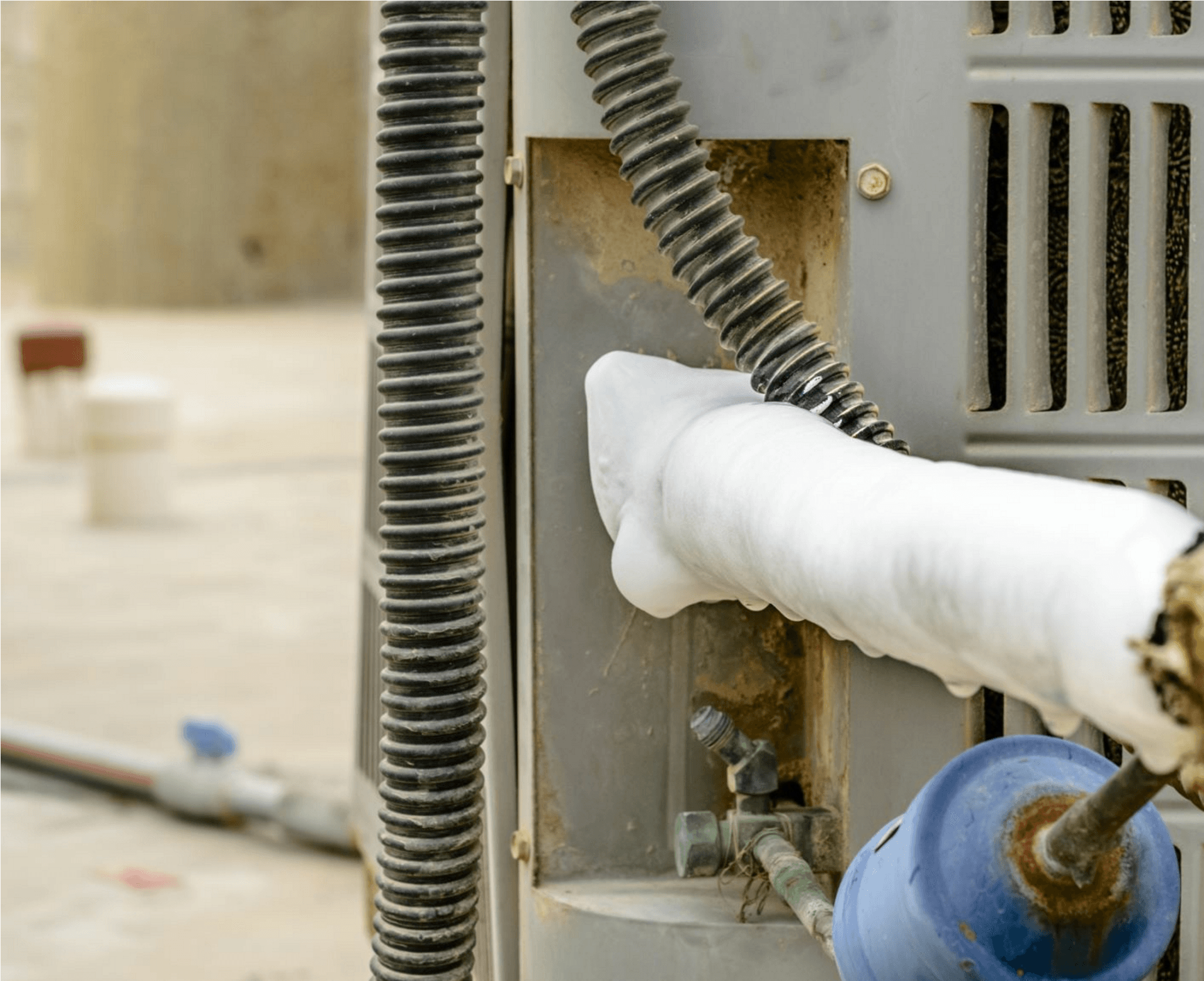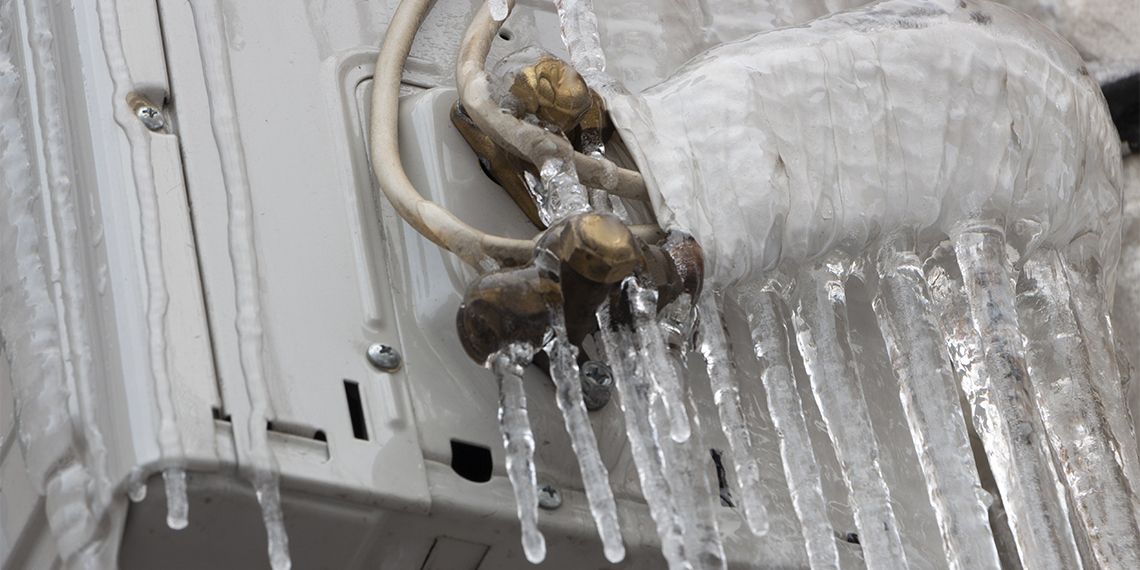My AC Pipe Is Frozen - What Do I Do? Instructions for Residents
My AC Pipe Is Frozen - What Do I Do? Instructions for Residents
Blog Article
We have encountered this article involving Have a Frozen AC Line? Here’s How to Fix It directly below on the net and believe it made sense to share it with you in this article.

Introduction
Discovering that your AC pipeline is iced up can be concerning, especially during hot summertime when you rely upon your ac unit one of the most. Comprehending what to do in such a situation is critical to avoid further damages to your cooling system and ensure your convenience indoors.
Recognizing the Causes
Several variables can contribute to the cold of an AC pipeline. Understanding these reasons can aid you deal with the concern efficiently.
Absence of Airflow
One common root cause of a frozen a/c pipe is inadequate air flow. When the air movement over the evaporator coil is restricted, it can cause the coil to drop below freezing temperature, causing ice development on the pipeline.
Low Refrigerant Levels
Inadequate cooling agent degrees in your AC system can likewise cause an icy pipe. Low refrigerant degrees can create the pressure in the system to go down, bring about the freezing of wetness on the evaporator coil.
Cold Weather Conditions
In cooler environments, freezing temperatures outside can add to the cold of a/c pipes. If your a/c unit is not effectively shielded or if there are leaks in the ductwork, cool air can infiltrate the system, causing the pipeline to freeze.
Dirty Air Filters
Unclean or blocked air filters can restrict air flow in your air conditioning system, resulting in various issues, consisting of an icy pipe. It's essential to change or cleanse your air filters routinely to make certain proper air flow and prevent ice accumulation.
Indications of a Frozen Air Conditioner Pipe
Recognizing the indications of a frozen air conditioner pipe is essential for timely activity.
Reduced Airflow
If you observe a substantial decrease in airflow from your vents, it could indicate a frozen pipeline.
Ice Buildup on the Pipe
Noticeable ice accumulation on the refrigerant line or the evaporator coil is a clear indicator of a frozen AC pipeline.
Weird Sounds from the Unit
Uncommon noises, such as hissing or bubbling, originating from your AC device can signify that there's ice present on the pipe.
Immediate Actions to Take
When confronted with an icy a/c pipe, it's important to act promptly to prevent further damages to your cooling system.
Turning off the air conditioner
The initial step is to turn off your a/c to prevent the system from running and worsening the issue.
Looking for Blockages
Inspect the location around the indoor system for any type of blockages that may be blocking air flow, such as furnishings or drapes.
Defrosting the Pipe
You can make use of mild methods like placing towels soaked in warm water around the icy pipeline to assist thaw it gradually.
Safety nets
Taking preventive measures can assist prevent future incidents of a frozen a/c pipeline.
Routine Maintenance Checks
Arrange routine maintenance contact a professional HVAC specialist to make sure that your air conditioner system is running successfully.
Changing Air Filters
Frequently replace or cleanse your air filters to stop air flow constraints and keep optimum performance.
Insulating Exposed Pipes
If your air conditioner pipelines are revealed to cold temperatures, take into consideration protecting them to prevent freezing during winter season.
Seeking Professional Help
If DIY approaches stop working to resolve the concern or if you're unclear concerning exactly how to proceed, it's best to seek help from a certified HVAC specialist.
When DIY Methods Fail
If your efforts to thaw the pipeline or address various other issues are not successful, it's time to call in an expert.
Value of Hiring a Professional HVAC Technician
A qualified HVAC professional has the competence and tools required to identify and repair issues with your air conditioner system securely and successfully.
Final thought
Handling a frozen AC pipeline can be an aggravating experience, yet understanding exactly how to react can help decrease damage and bring back comfort to your home. By comprehending the reasons, acknowledging the signs, and taking timely activity, you can effectively attend to the issue and avoid future incidents.
What to Do If Your AC Line Is Frozen
Make Sure All Supply and Return Air Vents Are Open
If you notice problems with airflow, the first thing you should do is check your supply and return vents. Supply vents distribute clean, conditioned air throughout your home. As this air becomes stale, it’s pulled into the return vent, where it’s reconditioned before being sent back out through the supply vent.
When these vents are closed, air won’t flow in the home. Before examining your AC, check the vents in every room and ensure they’re all open.
Check for a Dirty Air Filter
Another possible cause of limited airflow is a dirty air filter. Your air conditioner’s filters catch elements you don’t want to breathe in, such as dirt and dust. Over time, filters can become clogged, ultimately blocking air from flowing in and out. The lack of airflow can then cause the entire coil to freeze and will completely restrict any air from moving through it. The AC may need to be powered off for one to two days to allow the coil to thaw after replacing the filter to allow proper functioning of the unit. This debris can also accumulate on your AC’s evaporator coil, requiring a more serious repair. In general, air filters should be cleaned regularly (about every two weeks).
Assess Your Outdoor Unit
In addition to checking your AC, assessing the outdoor unit is a good idea. Also known as the condensing unit, it works with your interior unit to release heat outside. An issue with the outdoor unit can result in rising internal temperatures.
Overgrown Shrubs or Clogged Leaves
From leaves and twigs to shrubs and debris, there’s no shortage of outdoor elements that can accumulate around your condensing unit. When these elements get lodged inside the unit, they can block airflow. Fortunately, removing the blockage can solve the problem.
Sounds of a Broken Fan
Shrubs and leaves aren’t the only things that can impede your outdoor unit’s airflow. If the fan is broken, the unit won’t be able to properly get rid of heat — which means the internal temperature won’t go down. First, make sure the fan is spinning. If it is, check for the following sounds of a broken fan:
Buzzing Rattling Screeching Hissing Clicking Preventative Measures
Nobody wants to deal with a frozen AC line. In addition to causing problems with your air conditioner, they require professional repairs. On the bright side, there are preventative measures you can take to help ensure this issue doesn’t arise in the first place.
https://www.coopergreenteam.com/blog/what-to-do-if-ac-line-frozen

Do you enjoy reading up on What Do I Do If My AC Pipe Is Frozen? Write a comment below. We'd be delighted to listen to your thinking about this blog entry. Hoping that you come back again in the future. Are you aware of another individual who is looking into the topic? Do not hesitate to promote it. I am grateful for your time. Don't hesitate to stop by our website back soon.
Book A Service Report this page